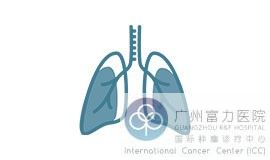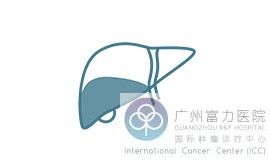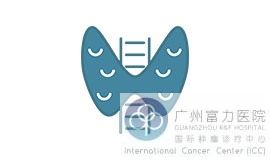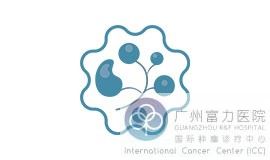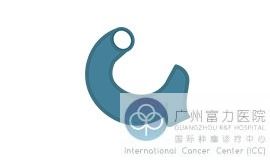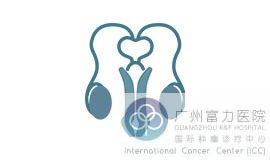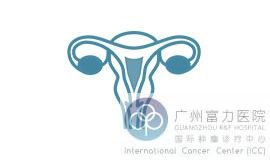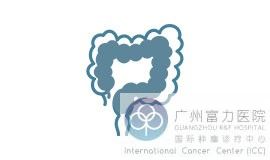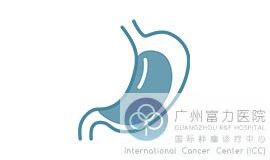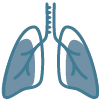——Cervical cancer—
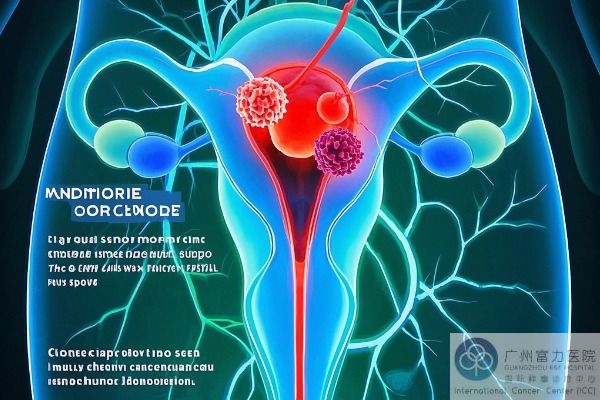
Cervical cancer, a serious challenge to women's health worldwide, ranks fourth in the incidence of female cancer, with approximately 600,000 new cases and 340,000 deaths among women each year. The burden is particularly high in developing countries, which account for 85% of global cases.
This cancer is mainly caused by persistent infection with high-risk human papillomavirus (HPV). There are usually no obvious symptoms in the early stages, but regular HPV testing and cervical smears can effectively identify precancerous lesions. Studies have shown that standardized screening can reduce cervical cancer mortality by more than 80%.
Modern medicine has given a positive answer to the question "Can cervical cancer be cured?" The five-year survival rate of early-stage patients is over 90%. For patients in the middle and late stages, comprehensive treatment plans including surgery, radiotherapy and chemotherapy have significantly improved the prognosis. It is worth noting that emerging minimally invasive techniques such as radical trachelectomy and laparoscopic surgery not only improve treatment precision but also provide the possibility of preserving fertility for young patients.
Classification of cervical cancer
Squamous cell carcinoma: divided into grade III according to histological differentiation. Grade one is well-differentiated squamous cell carcinoma, grade two is moderately differentiated squamous cell carcinoma, and grade three is poorly differentiated squamous cell carcinoma. The lower the degree of differentiation, the higher the malignancy.
Adenocarcinoma: accounts for 15%~20% of cervical cancer. There are two main histological types, mucinous adenocarcinoma and malignant adenocarcinoma. The incidence rate has been increasing in recent years, especially in young women.
Adenosquamous carcinoma: It accounts for 3% to 5% of cervical cancer. It has the characteristics of both adenocarcinoma and squamous cell carcinoma. It is highly invasive and requires an individualized treatment plan.
The 5-year survival rates for cervical cancer by stage worldwide are as follows:
Stage 0 (carcinoma in situ) survival rate: 90%-95%
Stage I (early invasive cancer) survival rate: 75%-85%
Stage II (tumor beyond the cervix) survival rate: 50%-65%
Stage III (locally advanced) survival rate: 30%-40%
Stage IV (distant metastasis) survival rate: 8%-12%
For more cancer knowledge, please click online doctor for consultation
—— Traditional treatment techniques for cervical cancer ——
Traditional treatments for cervical cancer
Surgery: Surgery is used to remove cancerous tissue and any lymph nodes in the neck that may have metastasized.
Radiation therapy: It can be used as a single treatment or combined with other treatments such as surgery or chemotherapy.
Chemotherapy: often used as palliative treatment for advanced cancer that is inoperable or has distant metastasis;
—— New technology for fighting cervical cancer ——
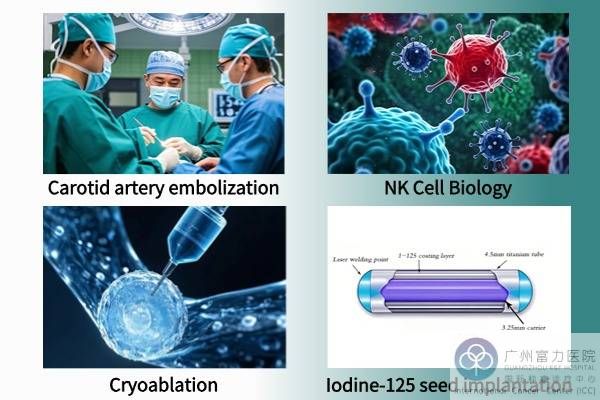
What is transarterial embolization?
Transarterial embolization is a minimally invasive technique that "starves the tumor to death." Under the guidance of DSA (digital subtraction angiography), the physician inserts the catheter into the tumor-supplying artery through femoral artery puncture (only a 2mm incision) and injects embolic agents (such as drug-loaded microspheres and iodized oil) to block blood flow. The tumor necroses due to ischemia and hypoxia, while the surrounding normal tissues are almost intact. If combined with chemotherapy drugs (i.e. TACE), a double blow of "cutting off food supply + poisoning" can be achieved simultaneously, and the efficacy can be increased by 2-3 times. It is done under local anesthesia, leaving only tiny pinholes in the skin.
What is NK cell biological immunotherapy?
NK cells (natural killer cells) are the "vanguard" of the human immune system. They can quickly identify and destroy cancer cells and abnormal cells infected by viruses without having to "remember" the enemy in advance.
What is cryoablation?
Cryoablation is a minimally invasive technique that physically destroys tumors through "extremely low temperatures". Under the guidance of CT or ultrasound, the doctor accurately punctures a pen-thin ablation needle into the tumor and releases argon gas to instantly cool the tumor to -140℃~196℃. The extremely cold environment freezes cancer cells into ice crystals, and the cell structure completely collapses. Subsequently, the helium gas is quickly heated to 20°C~40°C, and the alternating hot and cold "temperature difference attack" further destroys the residual cancer cells without damaging the surrounding normal tissues.
What is iodine-125 seed implantation?
Iodine-125 seeds are a type of "mini-radiotherapist" that is only 4.5 mm in size and contains the radioactive isotope iodine-125. After accurately locating the tumor using imaging technology (such as CT), doctors use a fine needle to implant dozens to hundreds of iodine-125 particles into the tumor. These particles deliver low-dose radiation over a continuous period of time (about 6 months), directly destroying tumor cells while maximizing the protection of surrounding normal tissue.
In addition, we also have the following tumor elimination technologies:
Radiofrequency ablation, cytokine therapy, CAR-T cell therapy, microwave ablation, immune checkpoint inhibitor PD-1/PD-L1 therapy, monoclonal antibody therapy...
—— Enter the technology area to see which technology is more suitable for you
—— Stories of patients with cervical cancer ——

Lin Meiyi (Malaysian patient)
"When medical treatment meets hope, traveling thousands of miles is the most worthwhile investment...."
—— To find out how she recovered, read his story
—— Symptoms of cervical cancer ——
Core symptom analysis:
Contact Bleeding (Key Warning)
Abnormal vaginal bleeding
Persistent pain (mid- to late-stage signal)
Abnormal leucorrhea (early signs that are easily overlooked)
Cervical cancer experts at Guangzhou R&F Hospital International Cancer Hospital remind you: If you find any of the above cervical cancer symptoms, you should go to the hospital for examination and treatment in time.
—— For more cancer knowledge, please click on the online doctor for consultation.
—— Cervical cancer diagnosis ——
I. Importance of cervical cancer diagnosis
Cervical cancer is the fourth most common cancer among women worldwide, but early cure rates of over 90% can be achieved through standardized diagnosis. The World Health Organization states that regular screening can reduce cervical cancer mortality by 80%. Currently, four major diagnostic technologies are used in clinics to form a screening network:
II. Four core diagnostic technologies
Cervical smear cytology test (TCT)
Iodine test (Schiller's Test)
Multiple cervical biopsies + endocervical scraping
Colposcopy
III. Recommendations for diagnostic process
Preliminary screening
Exception handling
Confirmation
Expert Tips
High-risk groups: HPV-infected people, women with multiple sexual partners, and women who smoke need annual screening
Golden period for treatment: The 5-year survival rate of early cervical cancer can reach 90%, and the cure rate of carcinoma in situ is nearly 100%.
Cancer experts from Guangzhou R&F Hospital International Cancer Hospital remind you: Cervical cancer diagnosis can help people detect cervical cancer in time and avoid delaying cervical cancer treatment.
—— Enter the diagnostic center to learn about the latest diagnostic and treatment technologies
Use precise technology to create more possibilities for life.
The Cancer Center of Guangzhou R&F Hospital has opened an era of "chemotherapy-free survival" for cancer patients, winning a lasting victory for life. If you or your family are facing difficulties in cancer treatment, please contact the Guangzhou R&F Hospital Cancer Center. We offer multilingual medical history consultations, contact us today to get an assessment of your treatment eligibility.
Contact Us:
email: rfcancercenter@gmail.com |
WhatsApp: +86 18565157271










